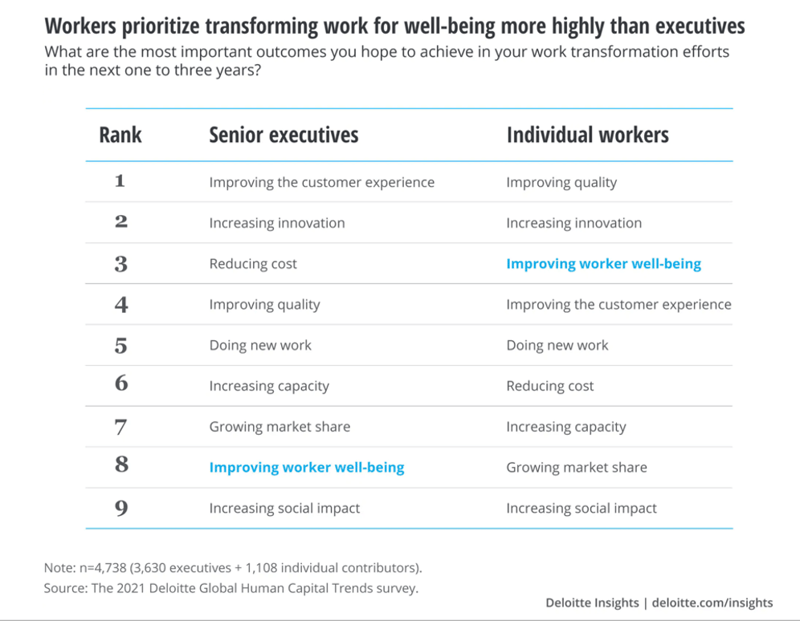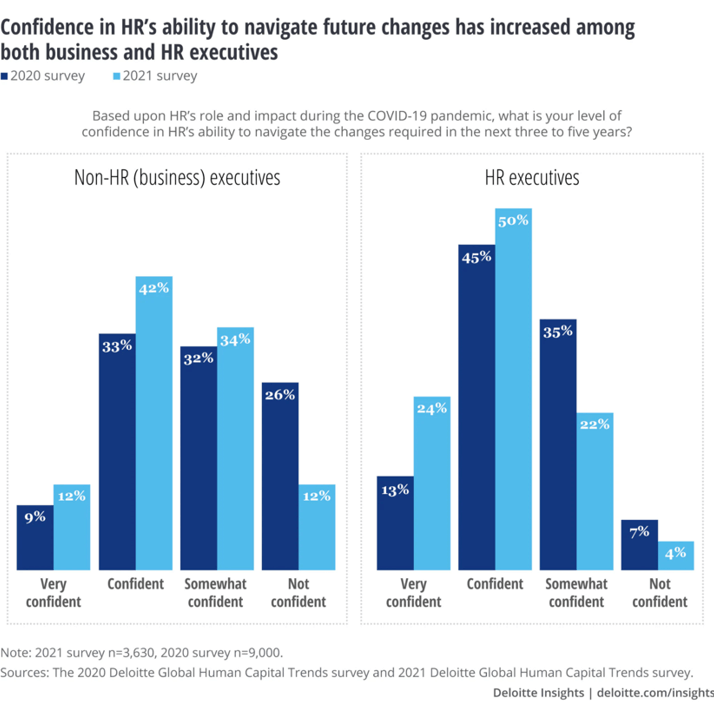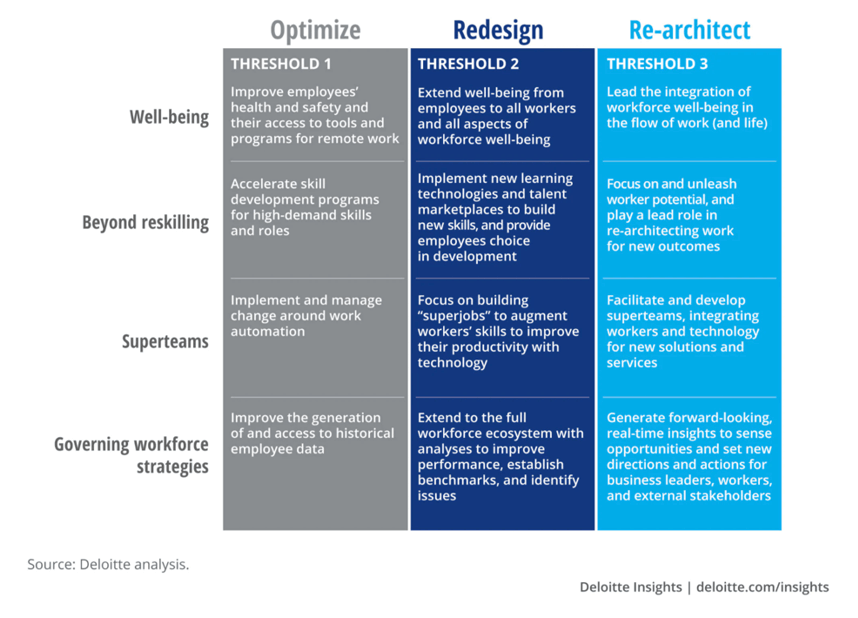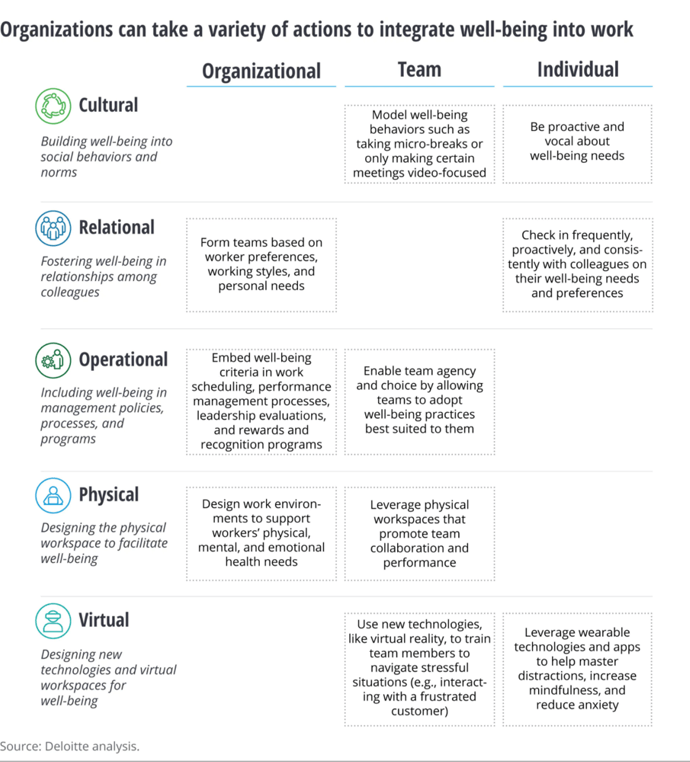If you talk to most enterprise-level executives about lessons learned in 2020, don’t be surprised if employee wellness is mentioned—often.
According to the HR.com 2021 State of Employee Health and Well-being study, 63% of organizational leaders agree that mental health is among their Human Resources department’s top five priorities moving forward. And 75% of HR professionals reported in the same study that employee wellness has become more of a priority.
To put it bluntly, if your organization isn’t prioritizing employee wellness, you might soon find yourselves at a competitive disadvantage.
Employee Wellness Contributes to Adaptability
Throughout this past year, we observed that organizations with an effective employee wellness program already in place:
- Were better prepared to adapt during the pandemic
- Had programs in place to support displaced and distressed employees
- Maintained a higher than anticipated level of productivity
We’re not alone in this observation: A recently published Deloitte Global Human Capital Trends study, entitled “The social enterprise in a world disrupted,” reveals that organizations are starting the shift into a “human-first” approach to decisions—where the impact on employee wellness is a major consideration.
All of this means employee wellness is now more than a “nice-to-have” perk. It must be a major priority, underpinning everything an organization does and serving as a foundation to help your entire organization become more productive, competitive, and engaging.
The Deloitte study indicates that this change is being driven by five trends in particular:
- Designing work for well-being: The end of false “work/life balance” and the start of the human-first workplace.
- Beyond reskilling: Unleashing worker potential by empowering workers with the ability and option to explore their areas of passion so they can be placed appropriately to work at the best level.
- Superteams: Leveraging technology to help employee teams learn, create, and perform in new ways to achieve better outcomes.
- Governing workforce strategies: Setting new directions for work and the workforce, anticipating workforce changes and capitalizing on employee potential, adaptation, and future leader readiness
- A memo to HR: Accelerating the shift to re-architecting work and putting HR/wellness in the driver’s seat.
While all these trends share the overarching philosophy of a human-first workplace, the first and fifth trends are of particular importance to HR and wellness professionals, helping them play a much more significant role in enterprise-level decisions.
Let’s examine these in more detail.
Designing Work for Well-Being
The pandemic has taught us many tough lessons. We’ve learned how precious life is, how much we depend on interpersonal interaction, and how much well-being ripples into every aspect of employees’ work lives.
 In fact, when asked the question, “What are the most important outcomes you hope to achieve in your work transformation efforts in the next one to three years?”, employees told the Deloitte team that the focus should be on:
In fact, when asked the question, “What are the most important outcomes you hope to achieve in your work transformation efforts in the next one to three years?”, employees told the Deloitte team that the focus should be on:
- Improving quality
- Increasing innovation
- Improving worker well-being
Further, the Deloitte team recommends that companies build well-being into actions, policies, and mandates at the individual, team, and organizational levels.
Employee Wellness at the Individual Level
At the individual level, companies should create an environment where employees are able to set their own boundaries and communicate their personal well-being needs without judgment. They should be included in the design and prioritization of policies and practices that balance those needs with those of the team and the organization.
Employee Wellness at the Team Level
At the team level, management and employees should connect and leverage their collective capabilities. Managers should be encouraged to learn, understand, and empathize with the well-being needs of their team. Management should empower team members to craft strategies that allow workloads to ebb and flow among the team, so everybody can “pitch in” and help each other out, allowing the team to perform at their best and thrive.
Employee Wellness at the Organizational Level
At the organizational level, management must commit—really commit—to employee well-being by keeping it top-of-mind in making decisions. When employees know their organization prioritizes their well-being just as much as profits, they tend to return the favor with increased engagement and performance.
Another Consideration: Work Environment Layers
As wellness directors begin to formulate their recommendations for each of the three levels, they must keep in mind that each work environment has nuances that impact employee wellness.
Consider each of these five environments:
- Cultural – How can you build well-being into social behaviors and norms that can then be adopted at each of the three levels?
- Relational – What strategies and tactics can you put in place to foster well-being in relationships among colleagues?
- Operational – How can you include well-being in management policies, processes, and programs?
- Physical – How can you design and influence physical workspaces to facilitate well-being, whether it’s ergonomics, aesthetics, or even sensory elements?
- Virtual – What new technologies and virtual workspaces can you make available to contribute to well-being when employees and teams work remotely?
From Optimizing to Re-Architecting
In the Deloitte study, analysts recognize the expanded role that HR played during the pandemic—mostly because the main issues companies dealt with pertained to keeping their workforces engaged while working remotely.
This was especially the case in companies that had previously been slow to adopt any type of work-from-home option for employees. Those companies were literally thrust into the unknown, and their HR teams led the way in restructuring those companies to function like before—and in many cases, even better.
 The study also demonstrates that senior leaders now have more confidence in HR’s ability to help organizations navigate future changes. In fact, the level of confidence doubled as a result, according to those survey results. Despite the good news, HR is still working within traditional boundaries and has yet to fully capitalize on this increased confidence.
The study also demonstrates that senior leaders now have more confidence in HR’s ability to help organizations navigate future changes. In fact, the level of confidence doubled as a result, according to those survey results. Despite the good news, HR is still working within traditional boundaries and has yet to fully capitalize on this increased confidence.
In the next several years, companies that want to shift to a “human” foundation will need HR teams with the ability and authority to re-architect work-related challenges to improve resiliency, empowerment, and overall results.
Re-architecting Work
HR organizations must be bolder in their actions and take on an enterprise mindset to help reorganize and restructure with employee wellness as a foundation. The goal is to drive new outcomes, create change, improve productivity, and foster innovation.
Re-architecting requires a new approach to how work, teams and capabilities are structured:
- Move from an outputs to an outcomes mindset – Instead of looking at the shortest distance or cheapest expense between two points, the question leadership should be asking is “What will get us the best results and outcomes we want?”
- Revisit re-architecting – People grow and change, so when these people are the foundation of how a company works, re-architecting that work needs to include an ongoing evaluation and option to make changes.
- Focus on teams – Use the tactics in the first trend and empower and lean on teams to get work done. Allow them the ability to solve problems and spark innovation.
- Capitalize on potential – Each employee brings their own unique capabilities, including analysis, synthesis, problem solving, social intelligence, and more. Identify and cultivate those capabilities to help make improvements.
- Consider how technology can help – While the intent is to build work around the human element of an organization, remember that technological capabilities play a role and can be quite helpful.
- Recognize and anticipate implications – Not everyone is going to embrace this new way of working and structuring work. Proactively manage any push-back, sabotage, or reluctance to adopt a culture shift.
This chart offers examples of how this approach can come to fruition.
 HR and wellness directors have an incredible opportunity here: The opportunity to architect how work takes place. By using workplace wellness best practices in tandem with these trends, they can lead by example and help their organizations realize their wellness and revenue goals.
HR and wellness directors have an incredible opportunity here: The opportunity to architect how work takes place. By using workplace wellness best practices in tandem with these trends, they can lead by example and help their organizations realize their wellness and revenue goals.
If you or your HR organization would like to discuss how you can apply these trends in your organization, WellRight is here to help. We’ve been working with employers for decades to create and implement workplace wellness programs that work.
For more information about Workplace Wellness Best Practices, download our guide today.




